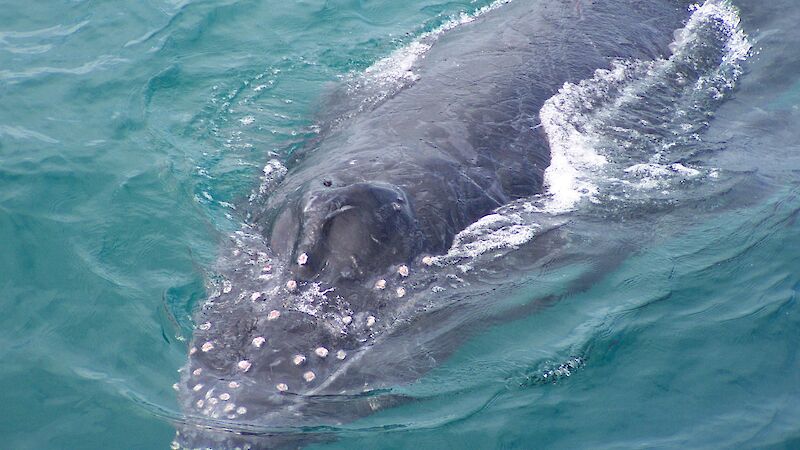Numbers of southern right whales (Eubalaena australis) in the Southern Hemisphere were drastically reduced in the early part of the 19th century by unrestricted whaling — to the point where they were thought to be almost extinct. But increased sightings from the early 1960s, together with reports of significant increases off South America and South Africa, resulted in a coastal research program, involving aerial surveys off southern Western Australia.
Aerial surveys have been conducted in the region every year since 1976 and were extended to include parts of the South Australian coast in 1993 and part of the west coast of Western Australia in 2000. The surveys aim to provide information on population increase and dynamics by assessing three whale classes: all animals, unaccompanied adults, and cow/calf pairs. The animals are counted and photographed and the photographs catalogued in a digital photographic database to enable identification of individual whales.
A 2007 survey run by Mr John Bannister of the Western Australian Museum, and supported by the Australian Marine Mammal Centre, continued off the coasts of Western Australia and South Australia (between Cape Leeuwin and Ceduna) in winter-spring. Three flights (involving different legs on different days) were undertaken between August and October to count the whales and take photos.
The total number of whales seen during the survey (286) was lower than any counts since 2003, largely as a result of the low number of cow/calf pairs recorded (57). By comparison, in 2005 and 2006, totals of 591 and 427 were recorded and 177 and 150 cow/calf pairs, respectively. However, more unaccompanied whales were observed (172) in 2007 — the second highest count since 2003.
Research suggests that oceanographic changes, such as higher sea surface temperatures in the years preceding the 2007 survey could have affected pregnancy rates of cows and thus the calving rate observed in 2007. If this is the case, Mr Bannister says the higher number of unaccompanied animals may reflect the presence of non-calving females. This theory is being tested through photographic matching.
A further survey flown in August 2008 gave much higher counts, contrasting markedly with the 2007 results. The total number recorded (702 animals including 236 cow/calf pairs) was higher than in any other year in the series.
Mr Bannister says that given the variability in counts from year to year, any major change in population size would take a long time to be detected statistically and at this stage an annual increase (from 1993–2008) of 6.2 % is the best estimate of the population trend for southern right whales visiting the study region. This equates to a total current Australian population of about 2400 individuals.
Whale research partnership
The first international workshop on non-lethal whale research in the Southern Ocean was held in Sydney in March. The workshop stemmed from Australia’s proposal at the International Whaling Commission (IWC) meeting in 2008 to develop a Southern Ocean Research Partnership investigating non-lethal whale research. The Partnership aims to improve the delivery of priority science to the Commission and to be directly focused on positive conservation outcomes for whales. The 50 workshop participants included scientists from 12 countries (Australia, Argentina, Brazil, Chile, Costa Rica, France, Italy, Mexico, New Zealand, South Africa, Uruguay and USA) and several research and environment consortiums. During the workshop participants agreed on the Partnership objectives, developed a research plan for assessment by the IWC Scientific Committee, and established a general procedural framework under which the Partnership might operate. The Partnership will be the largest non-lethal whale research program in the world. The Australian Marine Mammal Centre, based at the Australian Antarctic Division, will coordinate the overall work of the Partnership and manage the reporting responsibilities.
The Southern Ocean Research Partnership Workshop: Summary of Outcomes [PDF]
WENDY PYPER
Corporate Communications, AAD

